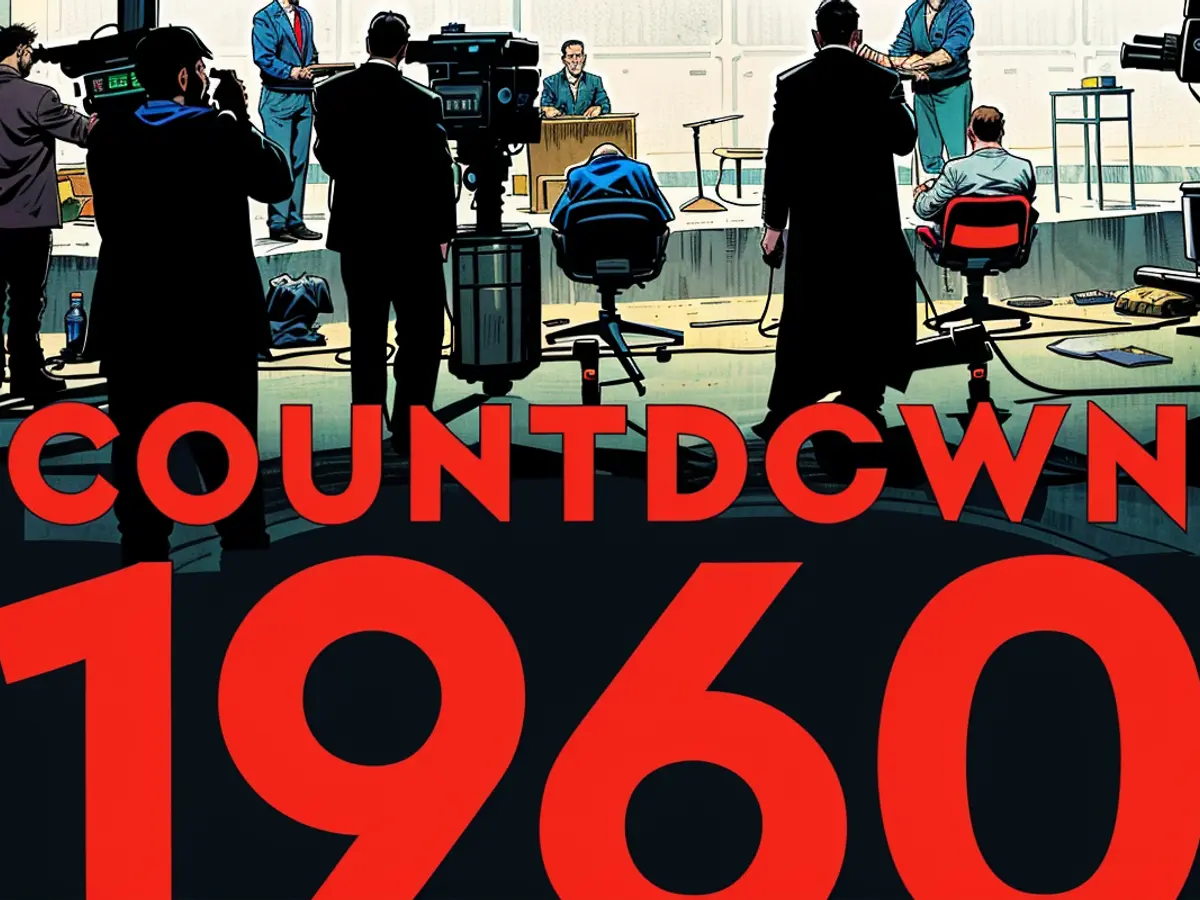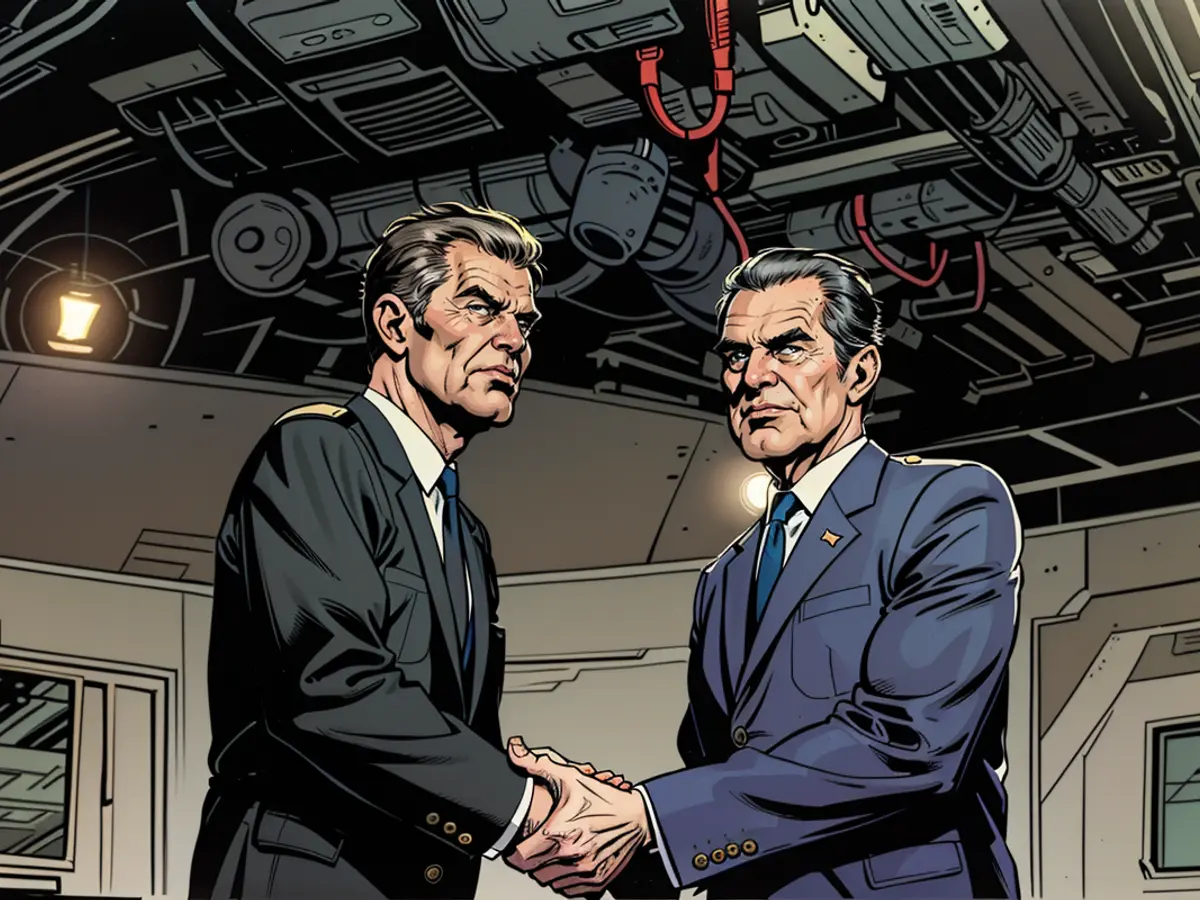The 1960 presidential election offers valuable lessons on the execution of a tranquil power shift.
The 1960 presidential election marked a significant shift. This was the first election to see live debates between major-party contenders on television and the first where both candidates were born in the 20th century. The electoral landscape mirrored the current scene, with both candidates presenting intriguing personalities.
John F. Kennedy, the privileged heir from a powerful household, spearheaded a revolutionary campaign. Utilizing his "Caroline," a private plane bought by his father, Kennedy traversed the country. He employed advanced polling, television, and his charisma and intelligence to connect with voters.
On the other hand, Richard M. Nixon, the incumbent vice president, lacked Kennedy's charm. However, Nixon had notable advantages – real-world experience, clashes with Soviet leader Nikita Khrushchev, and a record of eight years under President Dwight D. Eisenhower, which was marked by peace and prosperity.
While the 1960 election offers an enthralling political tale filled with tension and unexpected turns, it wasn't the primary motivation behind my new book "Countdown 1960: Unveiling the Secret History of the 312 Days that Altered American Politics Permanently." Instead, the reasons for writing "Countdown" are centered on its relevance to the 2020 election and the ongoing discussion about electoral processes.
In plain terms, there are valid doubts about the honesty of the 1960 election result. Remarkably, the alleged "loser" chose to forego challenging the decision and ensured a peaceful handover of power. The occurrences fall in stark contrast to the contemporary talk of voter fraud, rigged elections, and refusing to accept the outcomes.
Lets revisit Election Day, November 8, 1960. Kennedy had a marginal advantage in several crucial swing states, with the final popular vote margin of 112,827, or 0.17%. However, the remarkable turn of events in specific states tipped the scale in Kennedy's favor.
Kennedy garnered 27 electoral votes from Illinois by a narrow 8,858-vote margin out of more than 4.7 million votes. But the drama intensified as Chicago's Mayor Richard J. Daley and the Cook County Democratic machine provided Kennedy a significant advantage. Curiously, the reported results from Republican strongholds in downstate Illinois were announced first before the delayed results from Chicago and Cook County. When Daley's precincts reported, they recorded 'fantastic pluralities' for Kennedy, according to The Chicago Tribune from November 1960.
Unbelievably, in a single Ward 4 Chicago neighborhood, 25,770 votes went to Kennedy, while Nixon garnered only 7,120. It seemed unbelievable that in Ward 24 Kennedy gathered over 24,000 votes to Nixon's little over 2,130 votes. Bizarre occurrences in precinct Ward 2, Precinct 50, revealed up to 80 votes were cast, even though only 22 registered voters lived there. When Republican officials sought to examine suspicious activities, they discovered missing or empty ballot boxes.
The electoral process in Texas was even more questionable. Kennedy's running mate Senator Lyndon Baines Johnson's native state awarded 24 electoral votes to the Democratic ticket by a 46,266-vote margin out of more than two million cast. The election process in Texas posed an almost insurmountable challenge as voters had to not only select their preferred candidate but also eliminate all other choices by scratching their names out.
The complexity of this process resulted in thousands of voters failing to follow instructions. The final call to determine whether under-marked ballots should be counted or disqualified fell to the precinct judges, who were predominantly Democrats. In Republican-leaning precincts, up to 40% of Nixon's votes were disqualified. However, in Democratic-dominated areas, virtually no ballots were rejected.
With overwhelming evidence of irregularities, Nixon faced considerable pressure to contest the election. Republican Party national chairman Thruston Morton and other high-ranking officials refused to concede defeat. Some historians believe Nixon encouraged them to challenge results in crucial states.
Despite the mounting pressure, Nixon presented himself as a gracious loser. Sending a telegram to Kennedy, stating, "I am confident you will have the united support of all Americans," when the win was clear at 12:45 p.m. on November 9. On November 14, Nixon met with Kennedy in Key Biscayne, Florida, for a meeting aimed at promoting national unity. Faced with the press, Nixon described their encounter as a demonstration of how democracy works and that it was all about upholding the peaceful transition of power.
For someone who lived through the 1960 events (I was 13), the events of 2020 felt deeply disturbing. Having grown up with the understanding of democracy's rules–someone wins, someone loses, and both parties acknowledge the outcome–the shocking events of 2020 were a drastic change.
I'll never forget that pivotal moment, around 2:30 a.m. on November 4, 2020, during the election night. The race was still in the balance, millions of uncounted votes lingering, when then-President Donald Trump emerged before his audience in the White House's East Room. Fox News, where I used to work, had projected that Joe Biden would secure Arizona, marking the first time since 2016 that such a state had swayed to the opposite party.
"This is a deceit on the American people. This is a disgrace to our nation," Trump declared, his voice filled with frustration. "We were on the brink of winning this election. In reality, we had won the election."
The situation wasn't fraudulent, but it sparked a chain reaction of events. Countless lawsuits were filed, a request was made to Georgia's secretary of state to "discover" votes, and an attempt was made to assemble groups of fraudulent electors in states Trump lost.
If there is one moment that encapsulates the distinctions between the 1960 and 2020 elections, it unfolded on January 6. This was the day, as stipulated by the Electoral Count Act of 1887, for Congress to convene jointly in a session to tally the electoral votes of each state, and for the vice president to validate the election winners.
On January 6, 2021, Trump rallied a sea of enraged supporters to the Ellipse. "We will never yield. We will never surrender," he charged. And he issued their orders, "And we fight. We fight like there's no tomorrow. If you don't fight like there's no tomorrow, you won't have a country anymore."
Trump had been continually pushing his vice president, Mike Pence, to reject the electoral votes for Biden and overturn the election outcome. When Pence announced that he was constitutionally barred from undertaking such an action, the mob stormed the Capitol, even erecting gallows outside while shouting, "Hang Mike Pence."
Compare this to the occurrences of another January 6, in 1961. A remarkable day that saw Nixon presiding over the election tally. Standing on the House rostrum once the count was finalized, the murmurs of his party members urging him to contest the election echoing in his mind, Nixon still espoused the truth of the moment: "This is the first time in 100 years that a presidential candidate has announced the results of an election in which he was defeated, and announced the victory of his opponent."
Nixon declared that Kennedy, who was present in the House chamber, had been elected president. He continued, "I don't believe we can present a more striking and eloquent illustration of the stability of our constitutional system and of the proud tradition of the American people in upholding institutions of self-government."
This is why I penned "Countdown 1960," and why I believe it holds such relevance today. Sixty-four years ago, with the mantle of world power up for grabs, with victory and defeat hinging on a razor's edge, Nixon chose the moral path – not for his own benefit, but for his country.
Regrettably, that choice is no longer an assured option.
After the 1960 election, the discussions about fairness and honesty in the electoral process became a topic of political debate. Despite allegations of irregularities, Nixon chose to concede and maintain peace.
Contrasting the 1960 election, the 2020 election was marked by heated disputes and accusations of voter fraud, leading to numerous lawsuits and calls for reversing election results.
These sentences contain the words 'politics' without repeating the word itself in the text.









